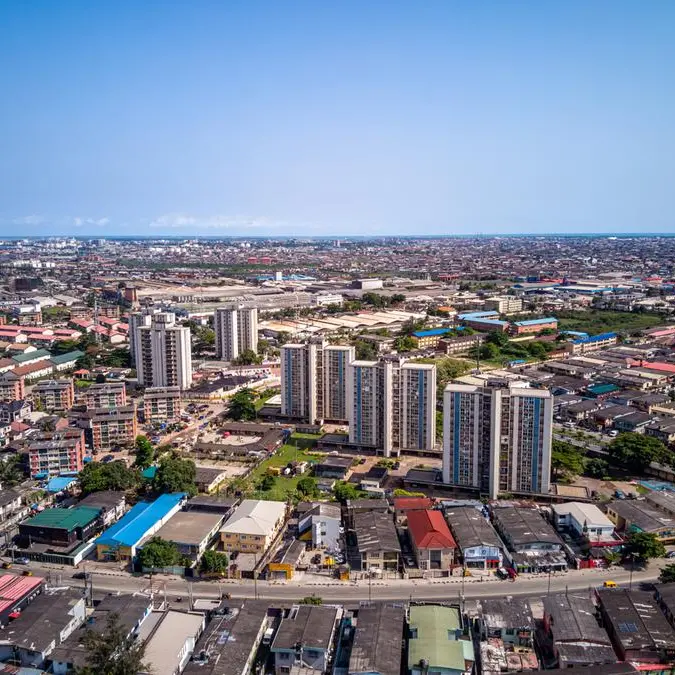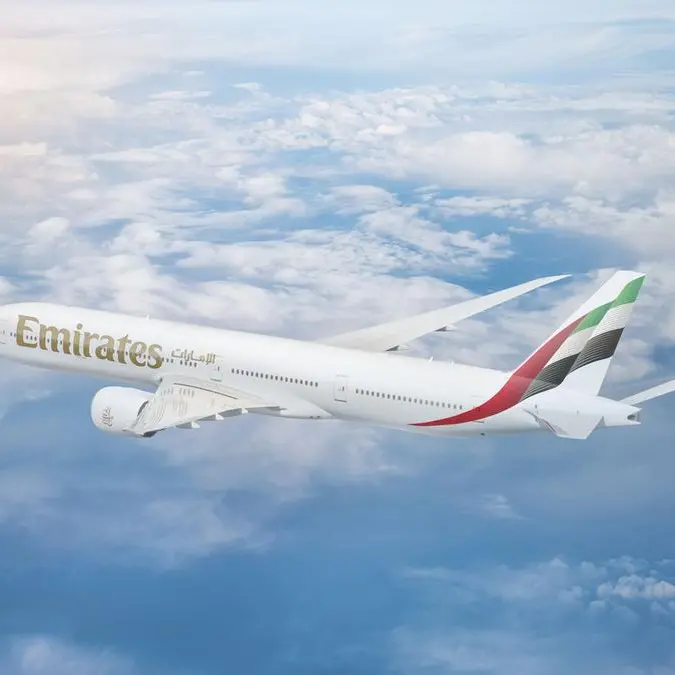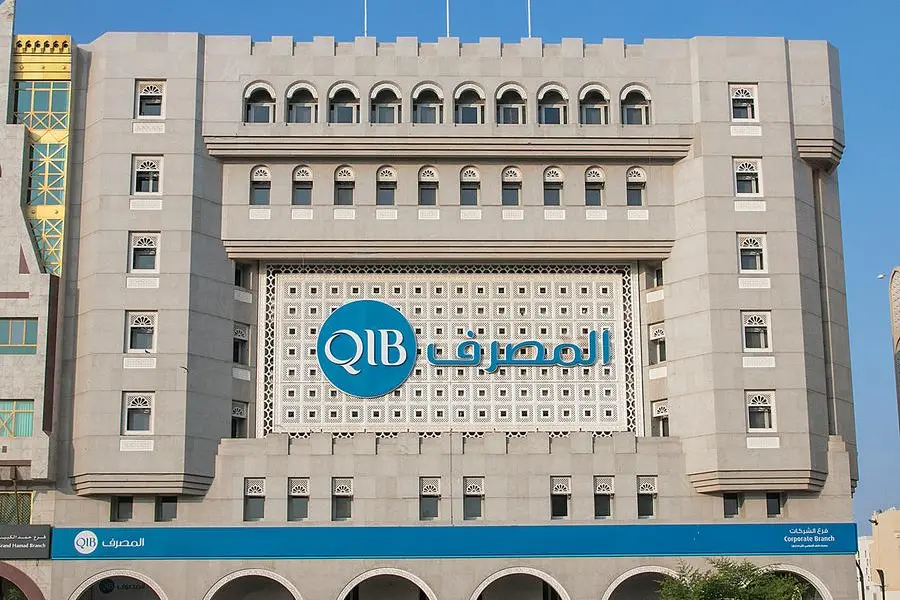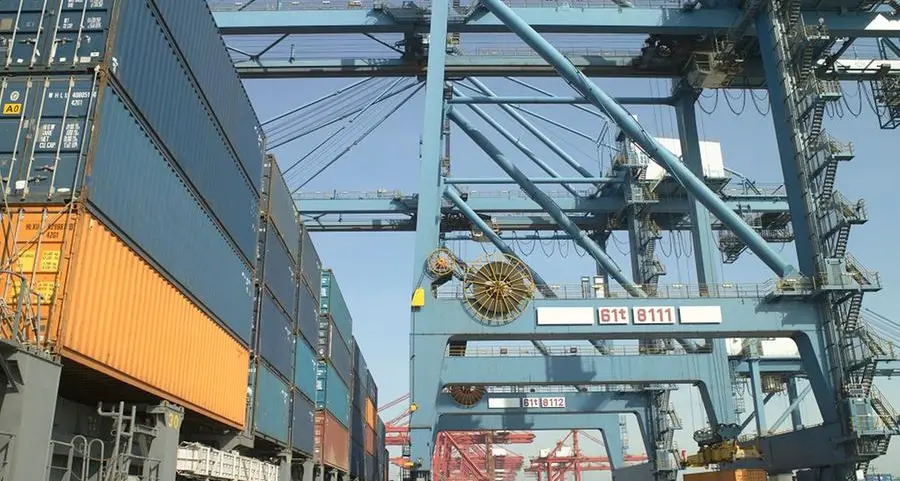International banks' exposure to Sub-Saharan Africa stands at a paltry USD 210 billion, according to the Institute of International Finance.
British banks have traditionally had the largest exposure to the region, with Eurozone banks a distant second, but Asian banks are increasingly taking a bigger bite of that market share.
Chinese banks' presence in the region has reportedly risen, with China Development Bank lending USD 67 billion to the region during the past decade, compared to USD 55 billion lent by the World Bank.
"Regional bank assets have grown more than four-fold over the past decade, surpassing 100% of GDP in South Africa and reaching some 50-70% of GDP in Namibia, Kenya, Togo, Nigeria, Senegal and Gambia," the IIF said.
Despite the huge advances in the regional banking sector, more than 300 million Africans remain 'unbanked,' which means they are not customers of financial institutions. Indeed, just under a quarter of Africans have used formal financial institutions by the end of 2011, World Bank data shows.
"Given the opportunities presented by these markets as well as the challenges of overcoming these obstacles, many financial institutions have been spurred to reconsider the way in which they do business," said KPMG in a report.
"The ultimate prize is the possibility of tapping into a massive pool of wealth. By some estimates, 95% of the nearly 500 million adults in SSA earning less than
USD 10 per day have no access to bank accounts. If this group were to become part of the formalized banking sector, this could lead to a significant increase in new deposits."
According to Standard Chartered, SSA's banking market is projected to be larger than the size of the current Indian banking market by 2015.
But international banks eyeing the region will find themselves against domestic franchises and also micro-financing institutions with strong networks.
"Global banks are increasingly looking to tap into these opportunities, although they are likely to come up against stiff competition from regional African banks, notably South Africa's Standard Bank and First National Bank (FNB), Togo-based Ecobank and Kenya Commercial Bank (KCB)," KPMG said.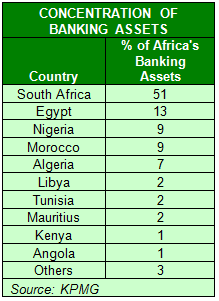
STRONG GROWTH
Across 10 key African markets - South Africa, Nigeria, Angola, Ghana, Zambia, Togo, Kenya, Gabon, Mauritius and Senegal - financial services sector has reported strong profitability and return on equity of between 10-20%.
Banking assets have surpassed 100% in South Africa, while reaching 50-70% of GDP in Namibia, Kenya, Togo, Nigeria, Senegal and Gambia, the IIF said.
Meanwhile, loan-to-deposit ratios are in 60-95% range with South Africa, Senegal and Nigeria at the higher end (not far from loans-to-deposit ratios in many developed market countries).
Of course, the growth has been from a low base, but the International Monetary Fund notes that Africa has had the largest increase in access to depository services (as measured by the number of deposit accounts per 1,000 adults) over the past decade.
"Africa has caught up to the Middle East and central Asia in access to depository services, and the gap between Africa and the rest of the world is slowly narrowing," the IMF said in its Financial Access Survey.
Branches of bank rose to around 170 per 100,000 adults in 2011 compared to 100 in 2004.
Commercial bank branches grew 70% over the period, and non-bank financial institutions' branches expanded by close to 50%, data shows.
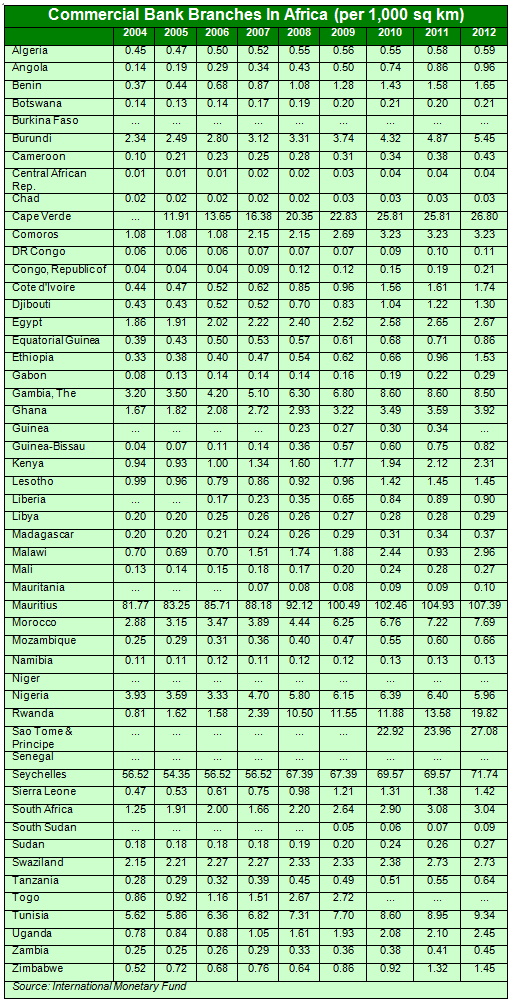
RISE OF MOBILE BANKING
While formal commercial banks have been slow to realize Africa's potential, postal savings banks and mobile network operators have picked up the slack.
The IIF estimates that microfinance loan portfolio in Sub-Saharan Africa stood at USD 7.8 billion in 2011. Although it is still 1.2% of the estimated USD 650 billion banking assets in the region, micro-financing is growing at a fast clip of around 20-25% in the region.
"Sub-Saharan Africa is a world leader in mobile banking, with m-banking facilities available in 28 countries; further development in the mobile banking industry is expected to have a significant impact on the business models of microfinance and financial services providers more generally," said the IIF.
As much as 16% of adults report having used a mobile phone in the 12-months to pay bills or send or receive money, compared to less than 5% in other regions.
Kenya's MPESA is considered one of the most successful mobile banking companies, catering to more than 14 million customers or 70% of Kenya's adult population.
Other major mobile banking initiatives include South Africa's First National Bank (FNB), which has subscribers across Botswana, Namibia, South Africa and Zambia, with an average of 1.2 million transactions worth USD 14 million every month.
Mobile banking, along with traditional banking institutions, is making rapid inroads into Africa's great "unbanked".
"While conceding that many challenges lie ahead, development of Africa's banking and finance sector has the potential to transform the lives of millions across the continent. Indeed, the successful expansion of financial services to include the lower income and 'unbanked' sectors of the population has the ability to provide jobs, create safety networks, and ultimately have a hand in reducing poverty," KPMG said.
alifarabia.com 2013


